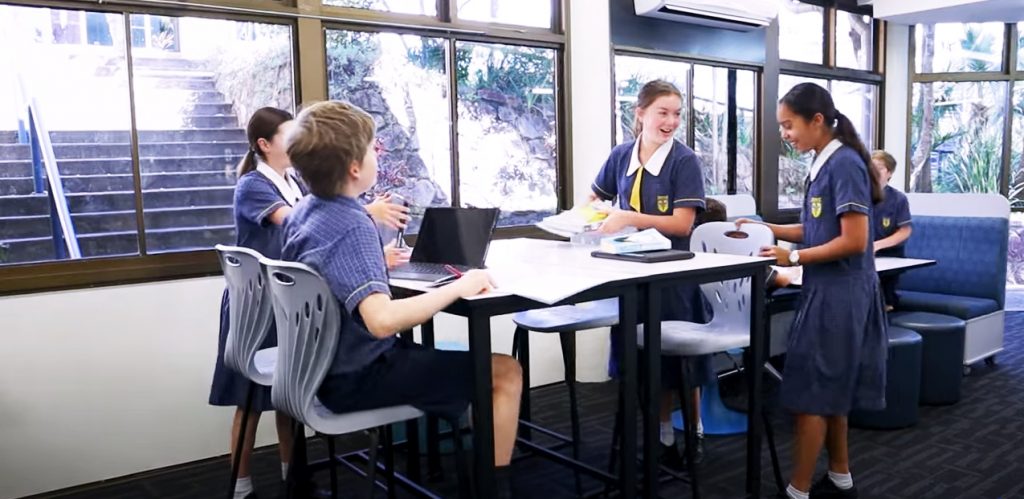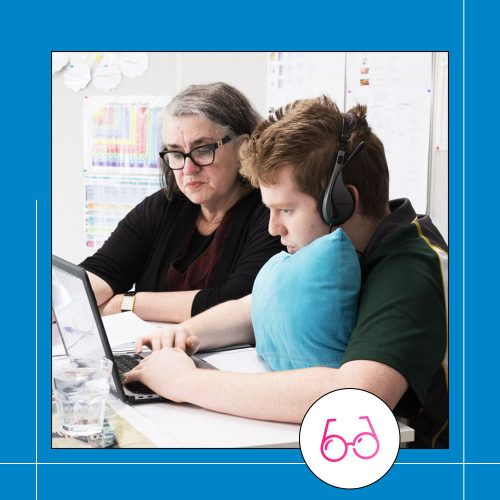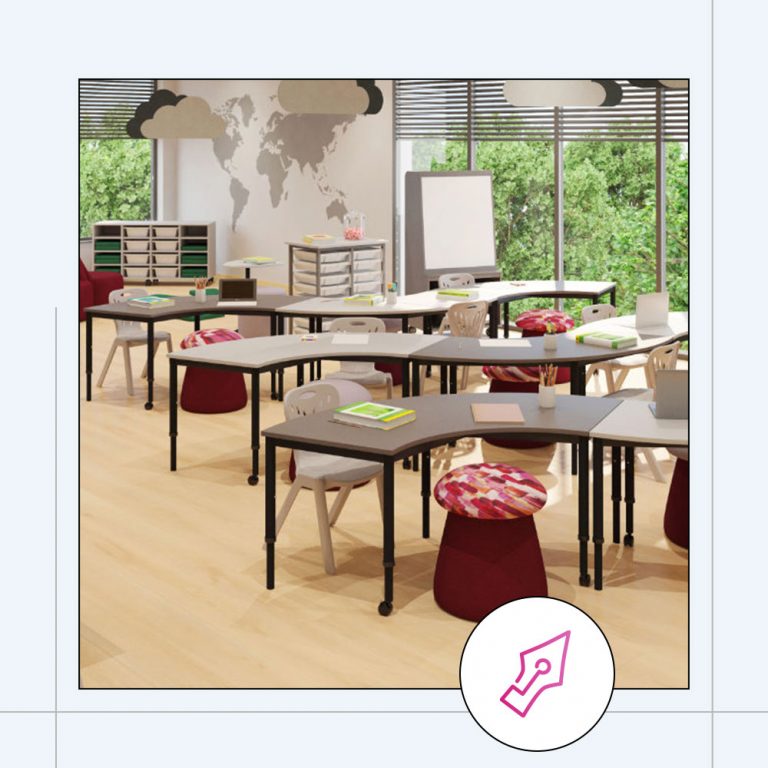Bringing Inclusive Education benefits to life
The concept of Inclusive Education has been evolving in Australian schools for nearly two decades. Its gradual implementation has been supported by advances in policies, school and classroom design and teaching approaches and backed by researchers, advocacy groups, educators and therapeutic practitioners.
Inclusive Education aims to provide equitable access to education, improved academic outcomes, places value on diversity, and encourages a sense of community.
BFX believes every child should have the opportunity to learn in a supportive, inclusive environment.
By partnering with industry professionals BFX is proud to offer a range of inclusive furniture that helps make children available for learning and simplifies the task of outfitting an inclusive classroom for educators.

What does Inclusive Education mean?
There is no singular, accepted global definition for Inclusive Education, and its meaning and implementation differ depending on the perspective of the student, teacher, occupational therapist, academic, school administrator or government. However, the intention remains the same: educating all students, regardless of ability or background, in the same classroom with similarly aged peers, with individually tailored quality instruction, physical and emotional supports or adjustments and teaching strategies that enable success in the core curriculum.
Some definitions – like that offered by UNICEF – focus on traditionally excluded groups of students, such as those with disabilities, speakers of minority languages, and students from socially and economically disadvantaged backgrounds.
Inclusive Education acknowledges that all children can learn and that every child has unique characteristics, interests, abilities, and learning needs. According to an article by Deakin University, inclusive teaching practice takes a proactive approach to value this uniqueness by focusing on “a universal design to learning that anticipates learner diversity and therefore works towards benefiting all students.”
Which groups benefit from Inclusive Education?
All students can benefit from Inclusive Education environments in both specialist schools or mainstream settings. This ranges from students with neurodevelopmental and behavioural disorders to children from diverse backgrounds who may face additional social and academic challenges, such as students from culturally and linguistically diverse backgrounds, those in remote areas and children facing socio-economic disadvantages.
The ultimate goal of inclusive classrooms is to create the right learning environment with the right opportunities, teaching and resources so that all students reach their full potential.

Why is Inclusive Education so beneficial?
A paper by Children and Young People with Disability Australia (CYDA) offers a comprehensive overview of the benefits of Inclusive Education for students, teachers, and the community. They state: “As well as positive outcomes for social justice and a sense of community and belonging, there are benefits for learning outcomes and for the social, behavioural and physical development of children and young people who do and do not experience disability”.
Benefits to all students include:
- Improved self-esteem and self-confidence
- Enhanced communication skills
- The development of qualities like patience, trust, acceptance and responsiveness
- Being aware of and valuing diversity and individuality
- Higher-quality instruction that addresses individual needs
- Stronger friendships and bonds between diverse groups of students
- Greater community inclusion and participation
- Access to a broader range of play and learning opportunities
Furthermore, Unified Champion Schools in the US found that inclusivity reduced teasing, bullying and the exclusion of students, regardless of the presence of a disability.
How does inclusivity manifest in a school?
The practical application of Inclusive Education principles extends well beyond the physical classroom – the shift to an inclusive model means embedding inclusivity into all aspects of the school environment through culture, policies and practices. Inclusive Education manifests in schools through:
- Specialist teacher training
- Teaching and learning strategies and individual learning plans
- Refurbished or new accessible buildings and facilities, e.g. step-free access or lifts, hearing loops, large screens, flexible multi-use spaces
- Refurbished or new furniture that supports physical disability and sensory needs
- Accessible learning materials for visual impairment or colour-blindness
- A focus on inclusion in sporting, artistic and social activities
- School visits by specialist therapists, e.g., speech therapists, occupational therapists
- Flexible attendance for students who require therapy or specialised education programs outside of their mainstream school
- Creative use of technology to facilitate learning and assessments, e.g. using iPads instead of paper and pens
- Specially-trained guidance counsellors and support staff
What role does furniture play in creating an Inclusive Education environment?
“An inclusive classroom creates a supportive environment for all learners, including those with learning differences and one that can also challenge and engage gifted and talented learners by building a more responsive learning environment” Cambridge University Press.
Furniture offers schools one of the most impactful strategies for creating an inspiring, responsive and comfortable inclusive learning environment.
Today’s furniture designs are intentionally responsive to learners’ needs for one-to-one connection, movement, comfort and sensory regulation, removing emotional and physical barriers to learning.

How to bring Inclusive Education to life using furniture
Of course there is a human element to supporting children in the classroom but furniture plays a important role as well. 3 main areas where furniture may assist in making children available for learning are…
- Choose furniture that supports physically.
Some children, especially those with special needs have predispositions toward low muscle tone and poor core strength. If their attention is focused on maintaining their upright position, it is difficult for them to focus on anything else, including the content of their learning.
It is therefore important to provide well fitted, ergonomic furniture with height adjustability and high postural support or is compatible with Occupational Therapist postural aids such as seat wedges.
By supporting children physically through furniture they are given further opportunity for focus, attention and learning.
- Be mindful of sensory and emotional needs.
For most children, processing the vast amount of information our senses receive is ok but for some children, especially those who are neurodivergent, it’s easy to become either overwhelmed by too much sensory information or underreact to sensory input. Too much or too little input can result in emotional dysregulation, poor attention, inappropriate behaviour and a failure to absorb and retain information.
Furniture with comforting tactile surfaces, integrated auditory dampening features and calming colours and shapes are all great ways of providing sensory feedback via furniture.
All students can benefit from furniture that supports emotional and sensory needs and therefore encourages focus and attention.
- Engage specialist assistance.
The needs of every student and every classroom are unique, so a one-size-fits-all solution is unlikely to deliver a truly inclusive learning space.
Seek diagnosis and information from a paediatric health care professional. Then engage BFX Furniture who have a range of Occupational Therapist approved furniture and are committed to creating Inclusive Education environments. BFX can also provide on-site consultations so that you get furniture that suits the built environment.
BFX Inclusive Education Initiative
Every child should have the opportunity to learn in a supportive, inclusive environment. BFX has recently launched their Inclusive Education Initiative.
Our partnership with industry professionals, like Paediatric Occupational Therapist Sam Gourley, allows us to bring you a range of inclusive certified furniture that helps make children available for learning. Our initiative also extends to providing specialist training to our Sales & Project Consultants.
Contact us to book a free on-site consultation with one of our experienced team to see how we can help you create the ideal Inclusive Education environment at your school.













